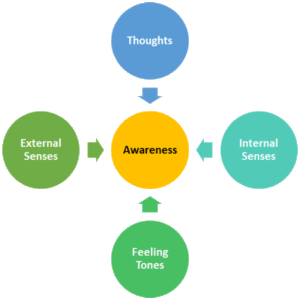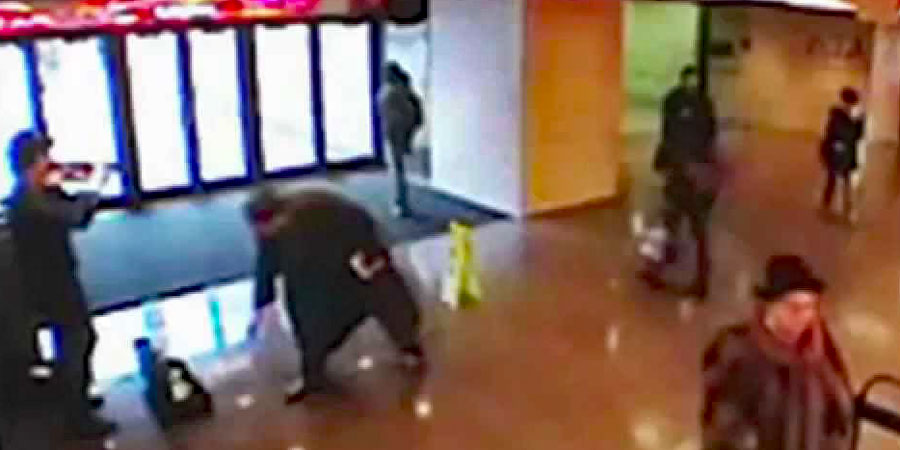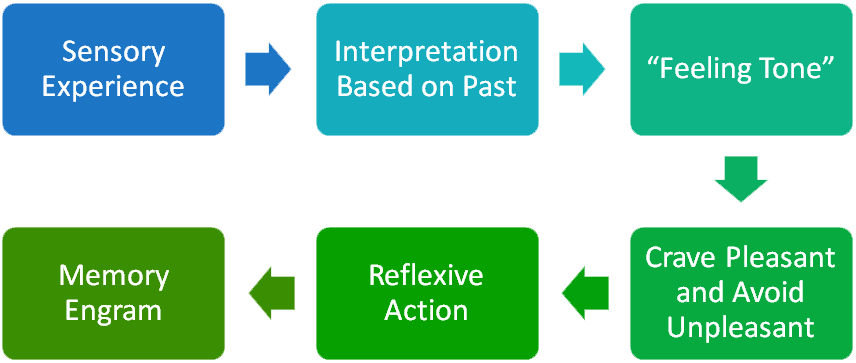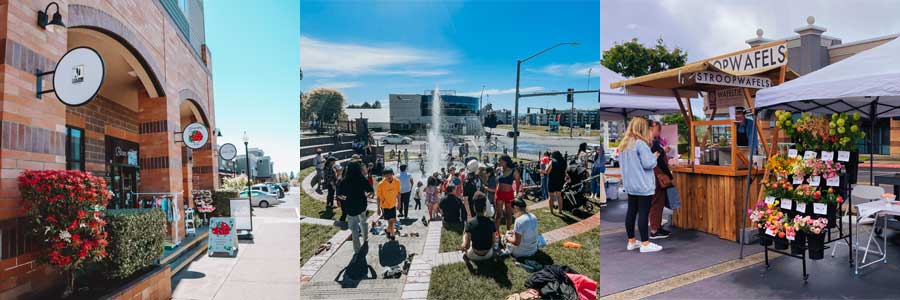It occurs to me that I have written a few posts about mindfulness without ever defining what is it. Let me remedy that oversight!
I like using Jon Kabat-Zinn’s definition. He’s the founder of the Center for Mindfulness in Medicine, Health Care, and Society at the University of Massachusetts Medical School and the progenitor of the highly acclaimed Mindfulness-Based Stress Reduction program. He says:
“Mindfulness is the awareness that arises from paying attention in a particular way: on purpose, in the present moment, and nonjudgmentally.” On purpose, present, and non-judgmentally.
I’ll unpack those three things.
ON PURPOSE: At any given moment, our brains sift through an ocean of input:
 From the five senses (sight, sound, taste, smell, touch)
From the five senses (sight, sound, taste, smell, touch)- From interior signals (breath, heartbeat, digestion, body temperature, etc.)
- From feeling states (happy, sad, angry, calm, anxious, excited, etc.)
- And from mental activities (planning, analyzing, remembering, imagining, ruminating, etc.)
We can’t possibly bring conscious awareness to all of that input, all of the time. So, our amazing brains use a lifetime of experience to process and interpret that raw data. (Where am I? What’s happening? Who am I with? Is there danger or opportunity? And so on…) They decide what will be brought into consciousness awareness, what they’ll store, and what they’ll discard. At root, it’s all about keeping us alive and safe.
Imagine that you are out for a walk in the woods, fully absorbed by an audiobook. If nothing of particular import is happening, you won’t notice all of the perceptual work that your brain is doing. But if there’s danger afoot – say the sound of a rattle – then that sound and the attendant fight-flight-freeze stress response will present a call to action.
Conscious awareness functions like a spotlight that focuses on specific stimuli or state of being. Again, it can be sensory data, an interior signal, a feeling, a thought, an intuition. And it can jump around from one to another, sometimes quite rapidly. Mindfulness teaches us to pay attention to what garners the spotlight – in other words, to notice what we’re noticing – to help make choices about where and how to focus attention, and to give us the freedom to interpret that input with interest, curiosity, and compassion.
IN THE PRESENT MOMENT: Human beings spend quite a bit of time with our brains disconnected from what’s happening in the moment. We think about things that transpired in the past or might happen in the future. We image circumstances and run simulations for events that may never come to pass. And we escape into our imaginations.
Harvard psychologists Matthew A. Killingsworth and Daniel T. Gilbert measured this phenomenon using a special “track your happiness” iPhone app. They gathered data from 2,250 subject of varying ages on their thoughts, feelings, actions, and happiness as they went about their daily business. On average, mind-wandering consumed 46.7% of their time, and the more their minds wandered, the less happy they were. Further analysis revealed that the subjects’ mind-wandering was generally the cause, not the consequence, of their unhappiness.[1]
If, like me, you are interested in being more content, mindfulness can help us notice when our minds go adrift and invite us to come home to the present moment.
NONJUDGMENTALLY: As noted before, our brains process lots of data, rendering assessments about what is crucial vs. trivial, good vs. bad, friendly vs, hostile, healthy vs. unhealthy, and so on. Of necessity, they are rather judgy. And that characteristic carries over into conscious awareness.
Mindfulness encourages us to notice our judgments while remaining curious, open, and accepting – not to put us in harm’s way, but to provide the means to think, speak, and act wisely.
Mindfulness can be practiced informally as we go about our day-to-day activities or formally through meditation. The latter develops our “noticing,” “now,” and “nonjudgmental” muscles. We learn to pay attention to what arises and put out the welcome mat for the experience. And we train ourselves to bring into consciousness a whole gaggle of thoughts, feelings, and sensations that might otherwise habitually fall beneath our radar.
[1] Steve Bradt, Wandering Mind Not a Happy Mind, The Harvard Gazette, November 11, 2010 (See https://news.harvard.edu/gazette/story/2010/11/wandering-mind-not-a-happy-mind/)








